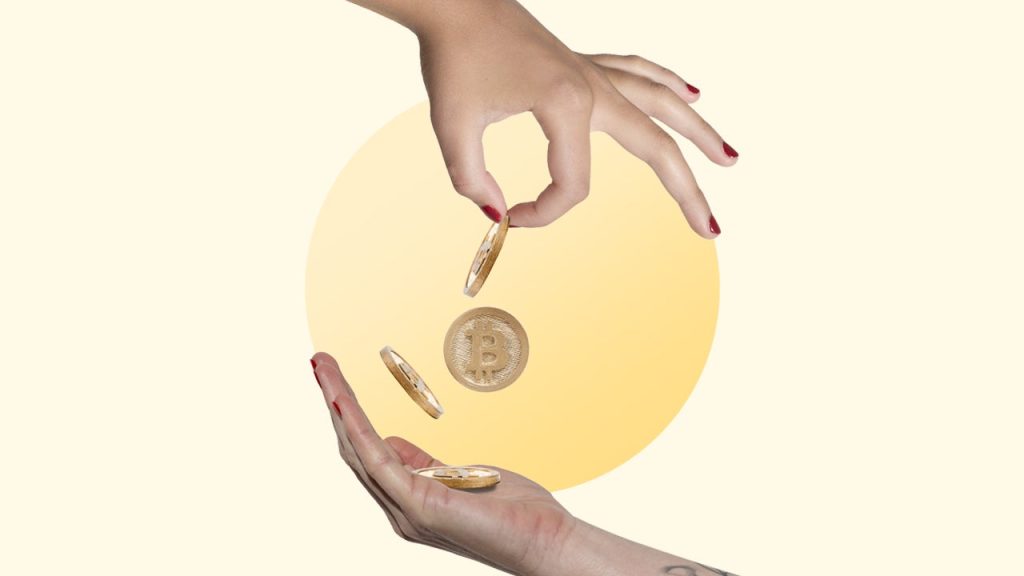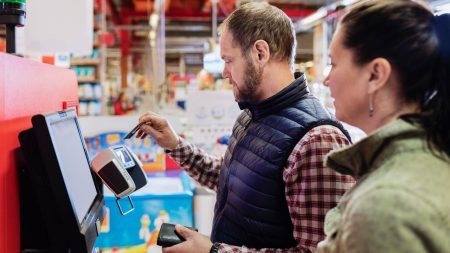Image by Getty Images; Illustration by Bankrate
Key takeaways
- Maker and taker fees are what crypto exchanges charge users for providing or removing liquidity from the market.
- Makers add liquidity to the market and typically pay lower fees, while takers remove liquidity and often pay higher fees.
- Understanding how these fees work can help reduce your crypto trading costs.
If you’ve ever invested in cryptocurrency, you might have encountered maker and taker fees, which are fees based on whether your crypto transaction is adding liquidity to the market or removing liquidity from the market.
Understanding how these fees work influences the timing and the cost-effectiveness of your crypto trades.
Here’s a look at how these fees work, who pays them and what else you need to know.
What are maker and taker fees?
In the crypto world, maker and taker fees are basically a fee structure imposed by crypto exchanges like Binance, Kraken and Coinbase One. The fee structure involves two parties: a maker and a taker. It helps to think of makers and takers in terms of market orders versus limit orders.
The maker is someone who sets a limit order that doesn’t take place immediately. The order can be to buy or sell crypto at a specific price that isn’t yet available. By placing the trade at a price that isn’t set yet, the maker provides liquidity to the market — either as a buyer or seller — for someone else in the market while waiting for their order to execute.
The taker is someone who is willing to place a trade via a market order that is executed immediately. Additionally, a taker could place a limit order that happens to exactly match one already on the books, thereby also executing immediately. The taker removes liquidity from the market because their transaction is immediate.
It’s important to note that both makers and takers are participants — or investors — in the market, not producers of the cryptocurrency.
Here’s where the fees come into play.
- If you’re a taker, you place a market order for a coin and then pay a taker fee since you’re taking liquidity out of the market because the order is immediate.
- If you’re a maker, you place a limit order for a specific price that doesn’t immediately find a matching order. This adds liquidity to the market by creating an order that someone can hopefully match with later. As a result, maker fees are typically lower than taker fees.
Examples of maker and taker fees
Maker and taker fees are considered a pretty technical topic in the crypto world, and there are lots of discussions on forums like X and Reddit about how and why these fees exist.
Many crypto traders are constantly attempting to mitigate maker and taker fees by using specific crypto trading strategies like batching orders, avoiding smaller trades and placing limit orders. It helps to use a hypothetical example of someone who might run into one of these fees and what it might look like.
Maker example
Let’s say Bob decides to sell some of his Ethereum and places a limit order on an exchange at $3,610 but the current market price is $3,600. Bob’s order isn’t matched immediately because he’s asking for a higher price than what the current market is willing to pay. The order sits on the order book (a type of digital ledger that lists crypto orders on a trading platform), which adds liquidity to the market.
Bob is charged a maker fee because he’s adding liquidity to the market.
Taker example
Let’s say instead Bob decides to place a market order for Ethereum at its current price of $3,600 and then immediately completes his order. In this scenario, Bob is the taker. He likely has to pay a higher fee because he removed liquidity from the market.
Maker and taker fees by exchange
Here are the maker and taker fees Bob might pay depending on which crypto platform he’s using and how much he is trading. Note that not all crypto exchanges (including WeBull and eToro) use the maker-taker fee model.
| Platform / exchange | 30-day trading volume | Maker / taker fees |
|---|---|---|
| Binance | $0 – $10,000 | 0.38 percent / 0.57 percent |
| Kraken | $0 – $10,000 | 0.25 percent / 0.40 percent |
| Coinbase Advanced | $0 – $10,000 | 0.40 percent / 0.60 percent |
| Gemini | $0 – $10,000 | 0.20 percent / 0.40 percent |
Bottom line
Maker and taker fees are fees charged to people buying and selling crypto depending on whether they’re taking liquidity out of the market or adding liquidity to the market. Many traders have strategies to avoid these fees, but investing in crypto isn’t for everyone. Crypto prices can skyrocket or plummet in a matter of minutes. Before investing, have a solid financial plan in place and understand what you’re getting into, including how maker and taker fees work.
Why we ask for feedback
Your feedback helps us improve our content and services. It takes less than a minute to
complete.
Your responses are anonymous and will only be used for improving our website.
Help us improve our content
Read the full article here












